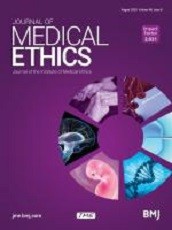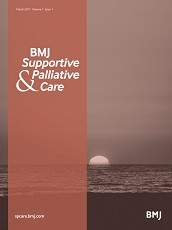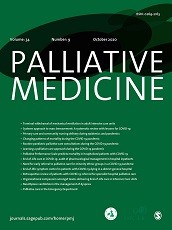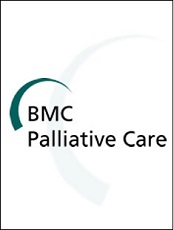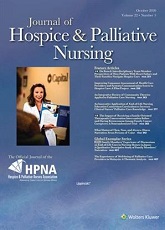Impact on freedom of conscience for health care practitioners and institutions
Sean Murphy
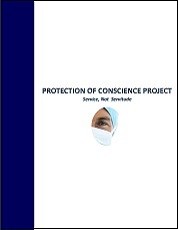
Executive Summary
New South Wales’ Voluntary Assisted Dying Act 2022 No. 17, drafted and introduced by Independent MLA Alex Greenwich, closely resembles Queensland’s Voluntary Assisted Dying Act 2021. It will legalize euthanasia and assisted suicide (termed “voluntary assisted dying”) in the Australian state when it comes into force in January, 2023. This review considers the impact the Act may have on health care workers and institutions opposed to euthanasia or assisted suicide (EAS) for reasons of conscience. Part I outlines the main features of the law, providing a context for discussion of provisions relevant to freedom of conscience in Part II (Individual Freedom of Conscience) and Part III (Institutional & Collective Freedom of Conscience).
Overview
Eligibility
People seeking euthanasia/assisted suicide (EAS) must be adults with an advanced, progressive disease or medical condition that is causing suffering (of any degree or kind) and that is expected to cause death within 12 months (in the case of neurodegenerative conditions) or within 6 months in all other cases. They must be acting voluntarily, without pressure or duress, and be capable of making and communicating medical decisions. They can be mentally impaired or have dementia or a disability, but EAS cannot be provided for mental impairment, dementia or disability alone. Decision-making capacity is presumed in the absence of evidence to the contrary if a patient appears to understand the consequences of a decision. The Act acknowledges that capacity can be temporarily or permanently lost. It imposes residency requirements that can be waived for compassionate reasons.
Practitioners
Only EAS-trained medical practitioners with least ten years general practice experience or specialist credentials can act as EAS coordinators and consultants. Other EAS trained medical practitioners and nurse practitioners may administer euthanasia.
Discussion with patients
It appears that NSW legislators muddled the wording of the provision about discussions with patients while attempting to modify the comparable provision in Queensland’s Voluntary Assisted Dying Act 2021. All health care workers, contracted care service workers and medical practitioners can initiate discussion about or suggest euthanasia/assisted suicide to patients, even if patients have not expressed an interest, as long as they provide other information required by the Act. If a patient asks about EAS, contracted care service workers and health care workers other than medical practitioners can provide EAS information, but need not provide information about available options or suggest that the patient talk to a medical practitioner. However, none are required to suggest or initiate discussion about EAS.
The EAS process
The EAS process begins with a “clear and unambiguous” first request to a medical practitioner made personally by a patient (not a third party). After discussing alternative options, the medical practitioner must accept or reject the request and promptly notify the patient. A practitioner who rejects a request must advise the patient that others may be able to assist, and must provide information about them or the Voluntary Assisted Dying Care Navigator Service. An EAS-qualified medical practitioner who accepts a request becomes the coordinating practitioner, responsible for supervising the EAS request, assessment and administration process.
A medical practitioner who accepts a request must assess the patient’s eligiblity. Patients deemed eligible must be referred to a consulting practitioner to confirm the assessment, and can be referred repeatedly to consulting practitioners until eligibility is confirmed. Referrals to specialists are optional, and their opinions are not binding.
A patient deemed eligible by two medical practitioners and who wishes to proceed must make a second EAS request, then a written declaration witnessed by two people, and a final request. Finally, with the coordinating practitioner’s assistance, me must make an administration decision: to opt for assisted suicide or euthanasia. Assisted suicide is less reliable than euthanasia, and experience elsewhere demonstrates that very few choose assisted suicide when both euthanasia and assisted suicide are available.
The second request, final request, and administration decision could all occur during the same consultation, although a final request cannot be made until the day after the completion of the second (consulting) assessment, and cannot normally be made within five days of a first request; the latter requirement can be waived if the patient may lose capacity or die before EAS can be provided.
Subject to Australian national laws, the Act explicitly allows the use of audiovisual communication for first and final requests and administration decisions. The Act does not explicity prohibit audiovisual communication for EAS assessments. Australia’s Criminal Code currently prevents this. Should the Code be amended to allow it, videoconferencing for first and final requests and administration decisions would immediately be allowed, and it appears that professional regulators in New South Wales would be able to permit videoconferencing for EAS assessements.
Providing EAS
Coordinating practitioners must be authorised by the Voluntary Assisted Dying Board (the Board) to prescribe a lethal substance for each patient, whether it is to be practioner-administered or self-administered. A practitioner providing euthanasia must have an adult witness present and ensure that the patient has decision-making capacity and is acting voluntarily. A patient can self-administer lethal medication at any time and place, without notifying anyone. Neither a witness or confirmation of decision-making capacity or voluntariness is required. It is thus possible for death by self-administration to occur in public or inconvenient places or remain undiscovered for some time. If the patient is incapacitated but does not die after being administered or ingesting the lethal substance, it does not appear that an additional lethal dose can be given to kill the patient unless the patient regains capacity and consents.
The wording of the Act seems to leave open the possibility that a friend, family member, agent or contact person could put the substance to or into the mouth of a patient who needs help to self-administer it, which, in some circumstances, would be indistinguishable from administering it. A required statutory instruction to patients that they are not obliged to self-administer the lethal substance could contribute to this outcome.
Death certificates
The Act requires the cause of death be falsified by reporting it as the disease or medical condition for with EAS was approved. Falsification of the cause of death on death certificates is contrary to international standards for identifying causes of death that are acknowledged by the Australian government. Falsification of death certificates contributed to the murder of over 200 patients by a British medical practitioner and led to unfavourable comments by the chairman of the subsequent inquiry into the murders.
Voluntary Assisted Dying Care Navigator Service
The New South Wales government will establish the Voluntary Assisted Dying Care Navigator service to assist those seeking “support, assistance and information” about EAS services. VADCNS will be a service dedicated to enabling euthanasia/assisted suicide, so it will not be equivalent to a service providing information and assistance related to a variety of government and health services.
Institutions (“entities”)
Institutions are categorized as “residential facilities” like nursing homes, hostels, group homes, etc. operated by “relevant entities” (excluding individuals) and “health care establishments” like hospitals or hospices operated by “health care entities” (including individuals). They may decide not to provide EAS related services and information.
The Act imposes obligations on residential facilities and health care establishments if a person in their care requests EAS information or services that they do not provide. They must allow a VADCNS employee or someone else “reasonable access” to anyone in their to provide EAS information.
Generally speaking, governing entities are expected to facilitate the transfer of patients in health care establishments to and from a location where EAS services can be provided.
On the other hand, they are expected to allow all EAS services in residential facilities for all permanent residents, and for all occupants who are not permanent residents if an EAS practitioner decides that transferring them “would not be reasonable in the circumstances.”
Oversight
The operation of the Act is to be overseen by an appointed Voluntary Assisted Dying Review Board. It must approve each EAS application and residency exemption, maintain a list of registered health practitioners willing to be involved in EAS services and monitor and report annually upon the operation of the Act. The Supreme Court of New South Wales is empowered to review and overturn decisions about residency, capacity, and voluntariness (not diagnosis or prognosis). Coordinating practitioners may refuse to continue if the Court overturns a decision about capacity or voluntariness, but must then transfer the patient to the consulting practitioner or someone eligible to act as coordinating practitioner.
Illusion of neutrality
The Act identifies eleven principles underpinning the statute and seems to give equal weight to all of them. Six are irrelevant to conflicts of conscience in relation to supporting or participating in euthanasia/assisted suicide and five are subject to morally partisan interpretations. This enables an adjudicator to impose subjective and contested views about the meaning and importance of each principle during an ostensibly neutral “rights balancing” analysis. No one should be under the illusion that the principles identified in the Act can be fairly and objectively applied in a “rights balancing” exercise when there is fundamental disagreement about what they mean.
The provision of euthanasia or assisted suicide under the Act is not considered palliative care, which is clearly distinguished as an alternative option. People hold different views about the moral acceptability of euthanasia and assisted suicide and whether or not the procedures are forms of health care or medical practice. However, the Act assumes that euthanasia and assisted suicide are morally acceptable forms of healthcare and must be characterized as death by natural causes rather than homicide or suicide. This does not demonstrate respect for different views. On the contrary: it effectively imposes a chokehold on public discourse, suppressing the words needed those opposed to the Act to express their reasoning.
Individual Freedom of Conscience
Conflicts of conscience
The health care professions are not divided into sharply defined groups of objecting and non-objecting practitioners. The position of many practitioners depends upon the nature of the illness or condition, opinions about decision-making capacity, voluntariness, or other issues they consider relevant.
The broader the grounds for euthanasia and assisted suicide, the more likely it is that conflicts of conscience will arise. By restricting eligibility to competent adults with terminal illnesses or conditions, and by explicitly ruling out EAS for disability, dementia or “mental health impairment” alone, the Act reduces the number of practitioners likely to experience conflicts of conscience when it comes into force.
Capacity assessments
The ability of practitioners to perform capacity assessments for euthanasia and assisted suicide is disputed, and assessment of limited, fluctuating and episodic capacity can be particularly troublesome. Patients could be deemed capable of choosing euthanasia/assisted suicide even if they are considered incapable of challenging medical decisions about alternative treatments and palliative care. The burden of illness may make it easier to understand the EAS process than alternative treatment options, and to choose what is more easily understood rather than what might offer significant symptom relief. Even practitioners willing to facilitate euthanasia for clear-headed patients may not be confident that they can safely act upon a request made when the clouds of major depressive disorder part for a time, or if the patient recovers what another colleague considers “enough” capacity to make a valid request.
Risk assessments by EAS supporters, uncommitted practitioners and EAS opponents may reflect significantly different views about life-or-death decisions based on different underlying philosophical or ethical views. A priori biases in favour of an outcome cannot be avoided in EAS assessments.
Overturning practitioner decisions
The New South Wales Supreme Court can overturn a coordinating practitioner’s conclusion that a patient is ineligible for EAS because of involuntariness or lack capacity. This can cause a problem for practitioners who are certain of their conclusion because, though they can withdraw, the Act requires them to transfer the patient to a colleague willing to continue the EAS process. They may well consider this unacceptable, and it is completely unnecessary. The Act should be amended to require the Voluntary Assisted Dying Board to find a new coordinating practitioner should the coordinating practitioner withdraw in these circumstances.
Protection for objecting practitioners
All health care workers, contracted care service workers and medical practitioners can initiate discussion about or suggest euthanasia/assisted suicide to patients, even if patients have not expressed an interest, but they are not required to do so. By explicitly making discussion optional, the Act supports both practitioners who want to initiate discussion about EAS and those who think it best to let patients take the lead, responding to their enquiries or apparent interests.
All registered health practitioners who conscientiously object to EAS may refuse to participate in any part of the EAS process and refuse to be present when EAS is provided. The wording of the relevant provision is ambivalent, but the Act does not require objecting practitioners to do anything other than record the refusal and the reason for it in the patient’s medical record and report the refusal and reason for it to the Voluntary Assisted Dying Board. Further, objecting practitioners who refuse to do something (such as referral) are protected from disciplinary action by regulators if they act in good faith and reasonably believe that the refusal is in accordance with the Act. Hence, the starting point for objecting practitioners pressured by regulators or others to do more should be that the Act not only does not require it, but (interpreting the ambivalent provision in a fully protective sense) affirms that they need not do so.
Protection for other care workers
The protection for individual freedom of conscience offered by the Act is limited to registered health care practitioners. No protection is provided for the many people involved in the provision of health care, personal care and aged care who are not registered health practitioners, even though the Act explicitly recognizes their work. For example, nothing in the Act prevents employers from requiring a personal care worker or social worker to actively support the provision of EAS or to be present when lethal medication is administered.
Falsification of death certificates
Regardless of their views about euthanasia and assisted suicide, some medical practitioners are likely to object to falsifying the cause of death in death certificates. They may be uncomfortable about lying or dissembling to families about how their loved ones died or concerned that falsifying records and lying is likely to undermine the trust essential to the practice of medicine. Others may have principled objections to falsifying documents, lying, dissembling and other forms of deception under any circumstances. Finally, some may consider falsification ill-advised because it is likely to compromise important epidemiological data. If the state insists that death certificates must be falsified, the Act should be amended to make a medical member of the Voluntary Assisted Dying Review Board responsible for completing EAS death certificates (assuming that a Board member’s objection to doing so would also be accommodated).
Institutional & Collective Freedom of Conscience
Factors relevant to moral decision-making by entities/collectives are not necessarily identical to those concerning individuals, and the concept of individual freedom of conscience is applied analogically to collectives, so some differences are to be expected. This paper presumes that entities/collectives are entitled to rely upon constitutional guarantees of freedom of conscience, notwithstanding differences between individuals and collectives in the exercise of that freedom. Individuals and entities/collectives are equally concerned to avoid complicity in perceived wrongdoing. This obviously includes taking part directly in what they deem to be a wrongful act, but also causally contributing to by collaboration or contingent cooperation.
The Act does not admit the possibility of conscientious objection by entities/collectives. Consistent with this, the Act acknowledges the need to respect individuals’ culture, religion, beliefs, values and personal characteristics, but not those of entities/collectives. It imposes a number of constraints and requirements on objecting entities/collectives specifically to compel their cooperation and even collaboration, some of which go beyond legal constraints arising from legal occupancy status. Refusal to participate in or facilitate killing people for moral reasons is placed on the same level as refusals based on pragmatic considerations like lack of trained personnel or management of institutional branding. The Act thus implies that guarantees of freedom of conscience or religion are irrelevant to decision-making by entities/collectives about involvement in killing people, and, if they defend refusals on that basis, the Act puts them at a disadvantage.
The Act is is concerned with two kinds of institutions: “residential facilities” like nursing homes, hostels, group homes, etc. operated by “relevant entities” (excluding individuals), and “health care establishments” like hospitals or hospices operated by “health care entities” (including individuals). Regardless of structure, an “institution” in the sense relevant here always manifests a collective enterprise by individuals, so the term “entity/collective” is used here to keep this in mind.
Participation, cooperation, collaboration
The Act does not require entities/collectives to provide euthanasia or assisted or even to provide information about the procedures, so it does not threaten institutional freedom of conscience in relation to direct participation in EAS services. Instead, the Act is designed to enable the state to compel unwilling entities/collectives to cooperate and perhaps collaborate in killing people in their care or helping them kill themselves, and to disadvantage any that resist by appeals to freedom of conscience.
However, patients and practitioners cannot proceed with EAS in an objecting institution unless they notify insititutional authorities at each stage in the EAS process. This is fortunate, because providing EAS services in a private apartment in a residential facility would be radically different from providing them behind a curtain in a room shared with others, and the Act does not distinguish between the two situations. Nothing in the Act prevents objecting entities/collectives from imposing conditions on EAS-related activities that they are required to permit once they have been notified.
EAS information
Objecting entities/collectives must allow all institutional occupants access to EAS information. They could direct all patient enquiries about EAS to staff members trained to provide patients with information necessary to enable informed decision-making without compromising institutional moral integrity. Hence, the cooperation required in providing information about EAS does not appear to undermine institutional freedom of conscience.
First and final EAS requests
The Act leaves room for objecting entities/collectives to direct staff to fully and compassionately explore and document first requests, refuse those found to be clear and unambiguous, and provide information enabling patients to seek EAS elsewhere. They can thus comply with a number of the Act’s provisions without compromising institutional moral integrity. However, the Act also requires objecting entities/collectives to allow EAS practitioners to accept first and final requests from anyone in their health care establishments and residential facilities. Accepting requests (i.e., agreeing to act upon them), especially final requests, is more directly supportive of and causally related to euthanasia and assisted suicide than merely receiving and responding to requests, and thus more likely to be problematic for objecting entities/collectives.
Declarations, EAS assessments, administration decisions, and administration of lethal substance
Moreover, the Act demands that objecting entities/collectives allow EAS practitioners to provide all EAS assessments, consultations and euthanasia/assisted suicide for permanent residents in residential facilities. Contingent cooperation of this kind is likely to be problematic, especially in relation to patients who share rooms with others. If EAS practitioners cannot attend, objecting entities/collectives must “take reasonable steps to facilitate the transfer” EAS candidates to a location where they can receive EAS services, including lethal injection. This suggests that active collaboration might be expected, and it goes well beyond merely granting the equivalent of a residential tenancy right to service delivery at home. Landlords are not forced to help tenants travel to see EAS practitioners who can’t make home visits.
Objecting entities/collectives may refuse to allow the EAS process for institutional occupants in health care establishments and residential facilities only if, once more, they “take reasonable steps to facilitate” transfers to enable the procedures elsewhere. If that means initiating rather than simply cooperating in a transfer requested by others, the purported compromise may amount to a choice between two objectionable alternatives. In addition, the Act allows legal action against objecting entities/collectives that require transfers from their health care establishments for EAS procedures (including euthanasia and assisted suicide) if transfer “would not be reasonable in the circumstances.” It also enables patients and EAS practitioners to veto transfers of institutional occupants from residential facilities, thus forcing objecting entities/collectives to cooperate.
Credentials (privileges)
The Act’s demands that qualified practitioners be allowed to provide EAS services to patients in facilities poses a dilemma for objecting entities/collectives in granting credentials. Granting credentials for EAS would explicitly affirm the acceptability of euthanasia/assisted suicide and authorize the procedures, thus contradicting their moral commitments. However, granting credentials may be necessary to avoid legal liability, and it may be the only way for objecting entities/collectives to impose enforceable conditions and restrictions on provision of the service in order to protect other patients, staff and mitigate harm to institutional moral integrity.
Bias
The provisions of the Act suggest that NSW legislators not only believe that it is morally acceptable to kill patients or help them kill themselves in accordance with their law, but are unable to imagine or unwilling to concede that others could reasonably and collectively hold and live in accordance with the contrary view, and should be entitled to do so in a democratic state. This demonstrates a lack of moral imagination or unreflective and entrenched authoritarianism inconsistent with the best traditions of liberal democracy.
TABLE OF CONTENTS
Preface
PART I: OVERVIEW
- Introduction
- Not palliative care
- Eligibility
- Practitioner participants
- Discussion with patients
- Request and assessment process
- Administration decision
- Authorisation of lethal prescription
- Prescribing and supplying a lethal substance
- Administration of a lethal substance
- Classification of death
- Falsification of death certificates
- Voluntary assisted dying care navigator service (VADCNS)
- Institutions
- Oversight
- Judicial review of practitioner decisions
- Statutory principles
- The illusion of neutrality
- Summary
PART II: INDIVIDUAL FREEDOM OF CONSCIENCE
- Introduction
- Eligibility
- Capacity assessments
- Disagreements about eligibility
- Discussion with patients
- Objecting registered health practitioners
- Other objecting care workers
- Falsification of death certificates
- Summary

